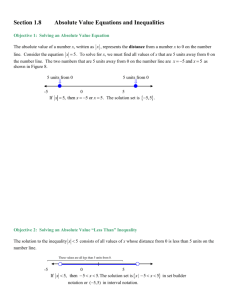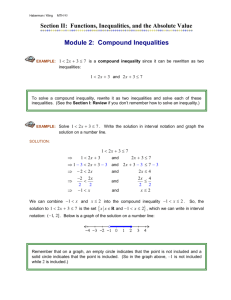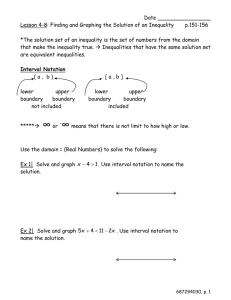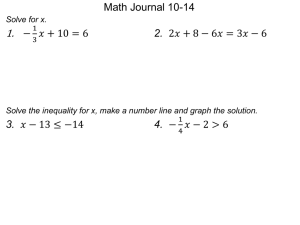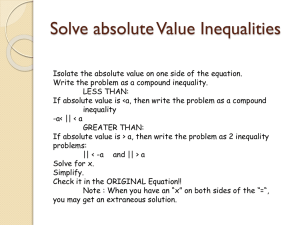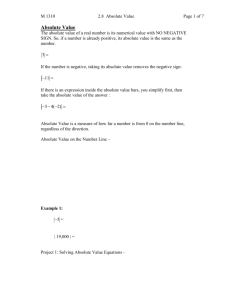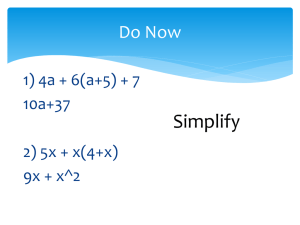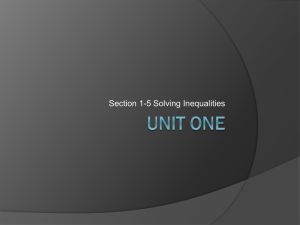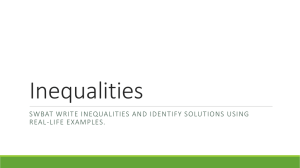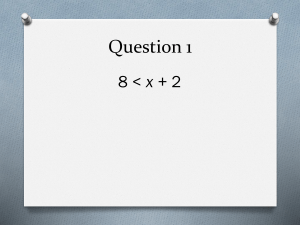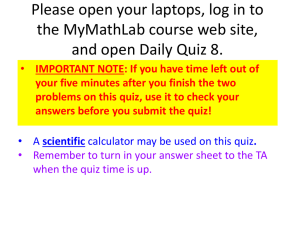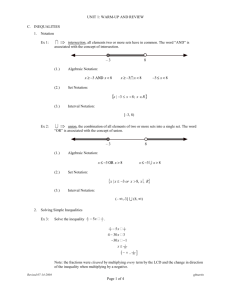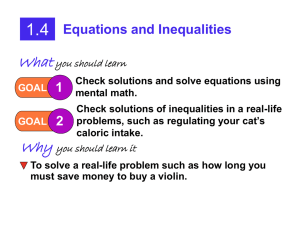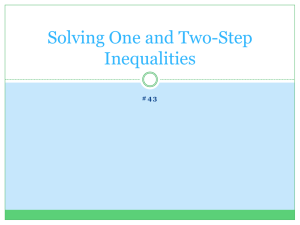Interval Notation and Inequalities
advertisement
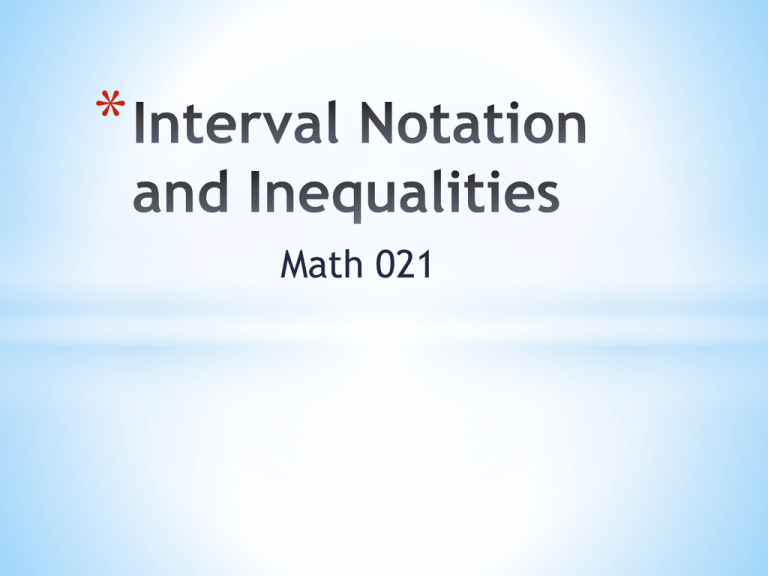
* Math 021 *Interval Notation is a way to write a set of real numbers. The following are examples of how sets of numbers can be written in interval notation: Graph Inequality Interval 2 x 3 (-2, 3] x3 (-∞, 3) x 2 [-2, ∞) x 2 or x 3 (-∞,-2] ∪ (3,∞) Inequality a. b. c. d. x 4 1 x 4 x0 x 1 or x 2 Graph Interval *Solving Linear Inequalities *Solving linear inequalities is similar to solving linear equations. Replace the inequality with an equal sign and solve using the same rules as solving linear equations. When solving, there is a rule of inequalities that must be followed: *If a ,b, and c are real numbers and c < 0: If a < b, then ac > bc If a > b, then ac < bc *In other words multiplying or dividing an inequality by a negative number flips the inequality. *Examples – Solve, graph, and write each inequality in interval notation: *a. *b. *c. *d. *e. *f. 3x – 1 < 11 2(x + 3) ≥ x + 4 4(3x – 1) ≤ 10(x + 1) 4x + 15 + x > 3 + 2x + 6 -6x - 2 ≤ 10 30 < -5x *Solving Compound Inequalities *A compound inequality is any inequality that contains two or more inequality symbols. *A union between two inequalities is all the set of all elements that belongs to either inequality. *Keyword for union is Or *An intersection of two inequalities is the set of all elements that belong to both inequalities. *Keyword for intersection is And * Examples – Solve, graph, and write each inequality in interval notation: * a. 6 < 3x ≤ 15 1 2 c. 2 ≤ x + 3 ≤ 7 b. -6 ≤ 5x – 1 < 9 d. 𝑥 > 5 𝑜𝑟 2𝑥 ≤ −4 e. 2 𝑥 + 3 ≤ 0 𝑜𝑟 𝑥 − 1 ≥ 7 f. 3𝑥 − 1 ≤ 5 𝑜𝑟 − 10𝑥 < 20



